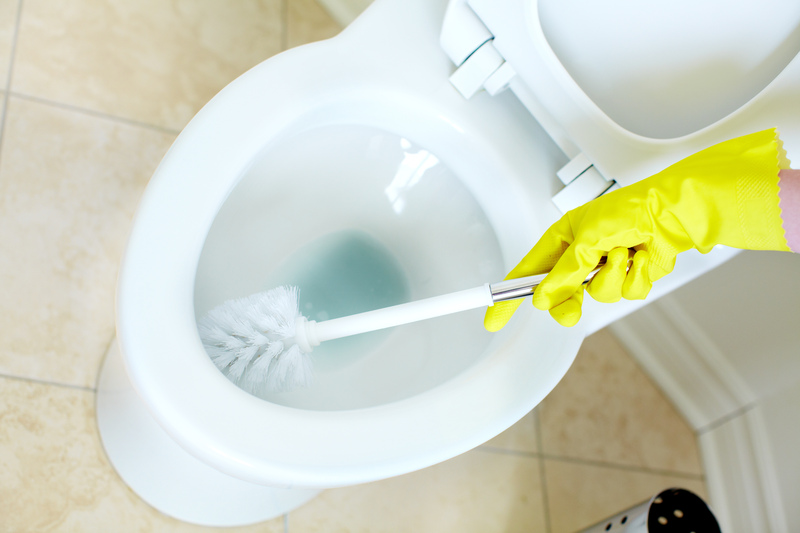Thrive in a Mould-Free Environment Starting with Window Sills
Posted on 30/08/2025
Thrive in a Mould-Free Environment Starting with Window Sills
Living in a clean, healthy space is not just about looks—it’s about your well-being. If you want to truly thrive in a mould-free environment, understanding where moisture and spores can creep in is crucial. Your window sills are often the first battlefield in this fight.
This comprehensive article will guide you through how window sills play a vital role in creating a mould-free home. You will discover why keeping them clean is essential, what causes mould to appear in these spots, and the best methods to prevent and treat mould. By the end, you’ll know exactly how to create a safe, healthy home beginning with your window sills.

Why Are Window Sills Prone to Mould?
Before you can successfully banish mould from your home, it’s important to understand why window sills become hotspots for unwanted mould growth. The culprits are usually:
- Condensation from temperature differences between indoors and outdoors
- Leaky or poorly sealed windows causing rainwater to seep in
- Poor ventilation leading to excess moisture accumulation
- Dust and debris serving as a food source for mould spores
These factors combine to make window sills a mold-friendly zone. Mould spores are always present in the air, but when they find moisture and nutrients, they colonize quickly—often on sills where you may not notice them right away.
Health Risks: Why You Should Care About Mould on Window Sills
Mould isn’t just unsightly—it can pose serious health risks for you and your family. People with allergies, asthma, or weakened immune systems are especially vulnerable.
- Continuous exposure can trigger allergic reactions and worsen asthma symptoms.
- Prolonged mould exposure may cause headaches, fatigue, and respiratory issues.
- Certain mould types release mycotoxins, which are especially harmful to health.
For a truly thriving life in a mould-free environment, it makes sense to start with proactive window sill care.
How to Spot Mould Growing on Window Sills
Mould can sometimes be tricky to identify, as it often hides in crevices or grows behind curtains and window dressings. Here are signs that you have mould on or around your window sills:
- Black, green, or white fuzzy patches on the sill or frame
- A musty, damp odor near windows
- Condensation or persistent dampness on the sill
- Peeling paint, bubbling surface, or warped trim
Tip: Check the corners and undersides of the sills regularly, as mould prefers dark, undisturbed spots.
Preventing Mould on Window Sills: Steps for a Healthier Home
1. Ensure Proper Ventilation
Good airflow is your number one defense against excess moisture. Consider:
- Opening windows for a short period daily
- Installing or using extractor fans, especially in kitchens and bathrooms
- Using a dehumidifier during humid months
2. Tackle Condensation Head-On
Condensation is common on windows, especially in winter. To reduce it:
- Wipe down sills and glass every morning
- Keep blinds or curtains open regularly to allow air to circulate
- Maintain indoor humidity below 60% if possible
3. Seal Leaks and Improve Window Insulation
If rainwater or drafts are getting in, seal any gaps around your window frames. You can use:
- Weatherproof caulk or sealant
- New weatherstripping
- Professional window servicing
Improved insulation not only prevents mould but also saves you energy costs!
4. Clean Your Window Sills Regularly
Don’t let dust and organic debris accumulate! Choose a schedule that works for you, but aim for at least once every two weeks. Use:
- A vacuum with a brush attachment for dusty corners
- Microfiber cloths dampened with a gentle cleaning solution
- An old toothbrush for tight spots
Routine cleaning reduces food sources for mould and gives you a chance to spot early signs of growth.
5. Consider Mould-Resistant Paints and Materials
Modern mould-resistant paints and sealants can provide a protective barrier. Look for products labeled as "anti-fungal" or "mould-inhibiting" when repainting or renovating your window sills.
How to Remove Mould from Window Sills
Already facing a mould problem? Here's a step-by-step guide to safely clean your window sills:
- Wear Protection: Put on gloves, goggles, and a face mask to avoid inhaling spores.
- Ventilate the Area: Open windows and doors to allow fresh air in. This reduces spore concentration indoors.
- Start Dry: If condensation or water is present, wipe the sill dry with disposable paper towels and dispose of them.
-
Apply Cleaning Solution: Use one of the following:
- 1 part white vinegar to 1 part water
- A mild general-purpose cleaning solution
- Commercial mould remover (follow manufacturer's instructions)
- Scrub Gently: With a non-abrasive sponge or brush, scrub the affected area. Rinse and repeat as needed.
- Dry Thoroughly: Moisture is mould's best friend--dry the area completely with a clean cloth.
- Dispose Safely: Any rags, paper towels, or sponges used should be thrown out to prevent re-contamination.
Never use bleach on porous wooden sills: it can worsen damage and does not penetrate deep enough to kill spores.
Maintaining Mould-Free Window Sills Year-Round
Prevention is easier than cure. Here are tips to maintain a mould-free environment starting with your window sills:
- Establish a monthly cleaning routine.
- Inspect thoroughly after storms or high humidity.
- Keep windows dry during the winter months.
- Address condensation and leaks promptly.
- Use dehumidifiers in persistently damp rooms.
- Trim plants near exterior windows to promote airflow.
Remember, thriving in a mould-free setting starts with small, mindful actions. Your window sills can either be a first line of defense or a hidden pitfall--choose the former!
When to Call a Professional
While most minor mould problems can be tackled by diligent homeowners, some situations demand expert attention:
- If mould keeps growing back rapidly after cleaning
- If the infestation covers a large area (more than 1 square meter)
- If the mould is in hard-to-reach areas like inside window cavities
- If you or your family are experiencing unexplained health symptoms
Professionals have specialized equipment and experience to eradicate persistent or hazardous mould. Don't hesitate to invest in this service for your family's health and peace of mind.
Environmentally-Friendly Mould Prevention for Your Home
A mould-free home can also be an eco-friendly one! Consider these sustainable solutions:
- Opt for homemade cleaners (vinegar, baking soda, lemon juice) over harsh chemicals
- Improve home insulation to reduce condensation and lower energy bills
- Choose water-based, low-VOC paints with mould inhibitors
- Fix leaks and close gaps to reduce outdoor water infiltration
- Use moisture-absorbing houseplants like peace lilies or Boston ferns
Key Takeaways: Start Thriving in a Mould-Free Home from Your Window Sills
- Window sills are often the first spot for household mould to thrive
- Controlling moisture, improving ventilation, and regular cleaning are central to mould prevention
- Use safe cleaning methods and avoid bleach on wood
- Inspect and maintain sills throughout the year
- Don't hesitate to call professionals for large or stubborn mould infestations
If you want to thrive in a mould-free environment, begin by caring for your window sills--these small steps build a healthy foundation for your entire living space.

Frequently Asked Questions
Can mould on window sills spread?
Yes! Mould reproduces by releasing spores, which can travel through the air and colonize other damp areas if left unchecked. Contain and clean mould as soon as you spot it.
How often should I clean my window sills?
Ideally every 2-4 weeks, or anytime you see condensation, dust, or organic matter building up.
Is it safe to paint over a mouldy window sill?
No. Always clean and dry any mouldy surface completely before priming and painting. Otherwise, the mould will grow back under the paint.
Are there quick fixes for condensation on window sills?
Wipe moisture daily, improve airflow, and use moisture-trapping draught excluders in extreme cold weather.
Your Healthier Home Starts with Clean Window Sills
Thriving in a mould-free environment is a continuous effort, but it pays off in comfort, safety, and peace of mind. Window sills may seem like a small detail, but they are a crucial starting point. With regular maintenance, smart prevention strategies, and prompt action, you can keep mould at bay--one sill at a time. Take charge of your home’s health and start thriving today!



